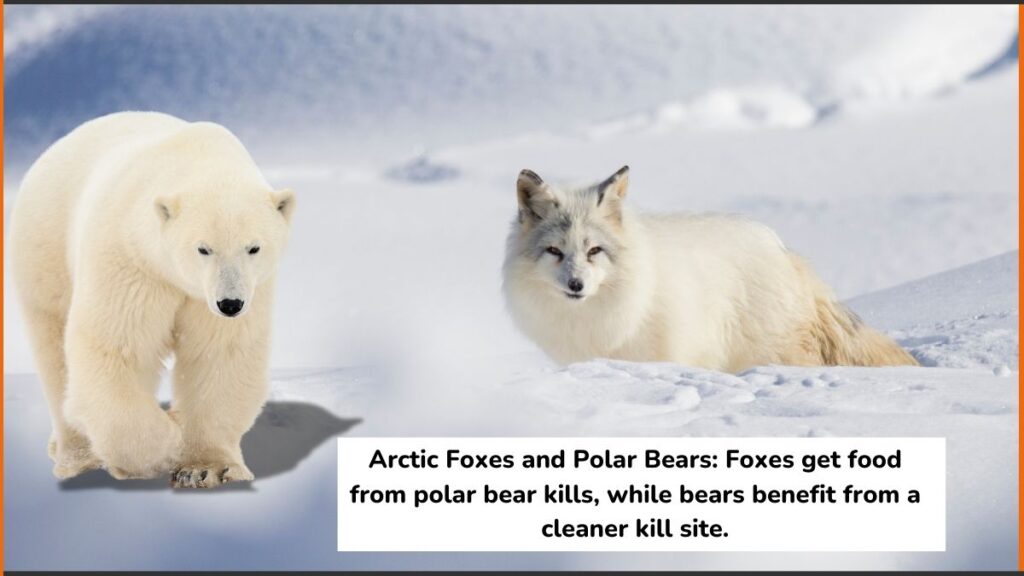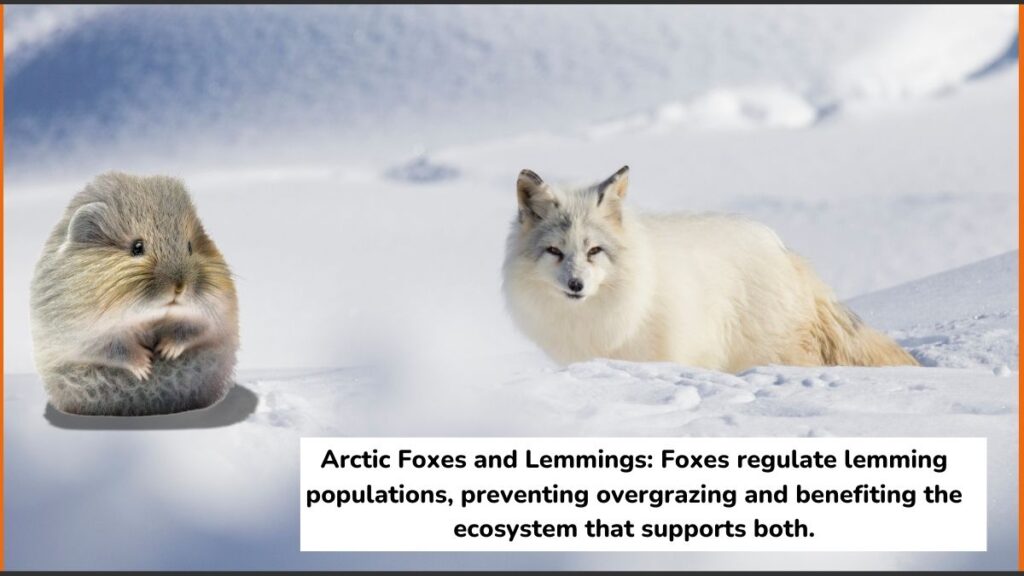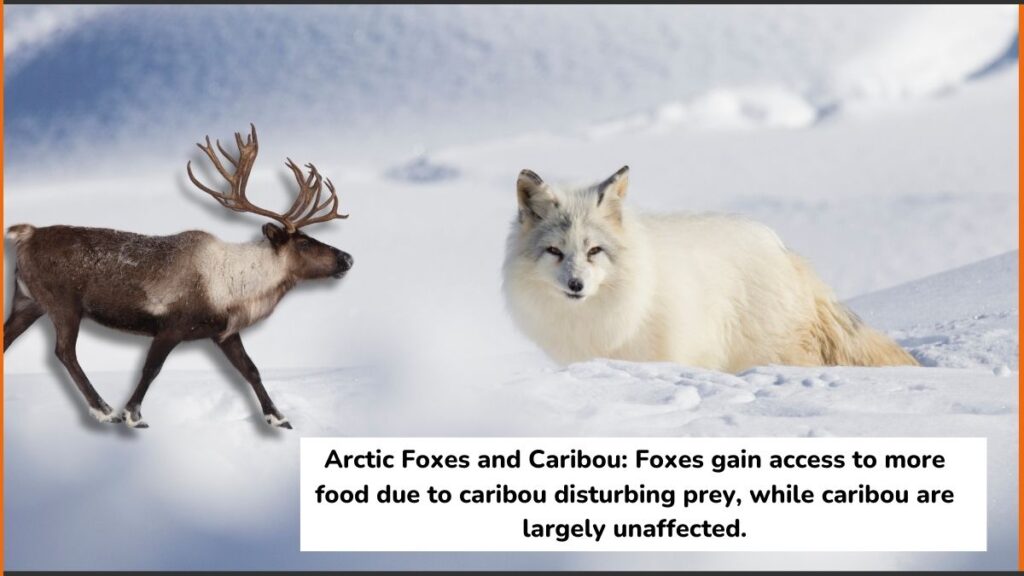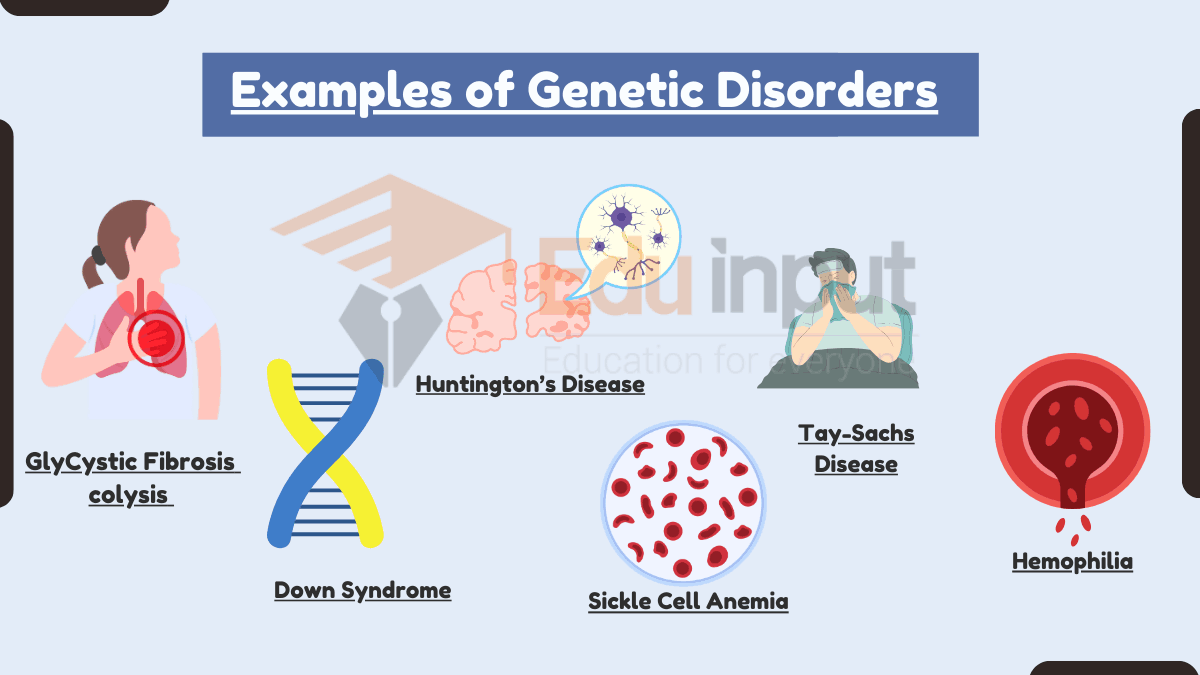Examples of Mutualism of Arctic Foxes in Tundra Biome
Mutualism is a relationship where both species benefit. In the Arctic tundra, where survival is challenging, Arctic foxes engage in various mutualistic interactions that contribute to ecosystem stability. These relationships help Arctic foxes secure food, regulate prey populations, and even influence plant growth.
By participating in mutualism, Arctic foxes support biodiversity and ecosystem balance. It makes them an essential species in this extreme environment. Below are some examples of mutualism involving Arctic foxes.
Read Other Examples of Mutualism
Arctic Foxes Mutualism Examples In Tundra Biome
Here are some examples of mutualism involving Arctic Fox in Tundra Biome:
1. Arctic Foxes and Polar Bears
Arctic foxes follow polar bears and eat the remains of their kills, mainly seals. Polar bears benefit because foxes clean up scraps, reducing the risk of disease and parasites. Foxes gain a steady food source, especially when lemmings are scarce. Studies show that in some areas, Arctic foxes depend on polar bear kills for survival.

2. Arctic Foxes and Lemmings
Lemmings are a main food source for Arctic foxes. The number of lemmings affects fox population size and breeding success. By hunting lemmings, foxes help control their numbers, preventing overgrazing and protecting the tundra ecosystem. Research shows a strong link between lemming cycles and Arctic fox populations.

3. Arctic Foxes and Caribou
Arctic foxes sometimes follow caribou herds. Caribou disturb the ground while feeding, exposing small mammals and insects that foxes can catch. Caribou are unaffected, but foxes get extra food. While not as well studied as other relationships, observations suggest this benefits Arctic foxes.

4. Arctic Foxes and Plants
Arctic foxes spread nutrients by leaving prey remains and feces, fertilizing the soil. They may also help disperse seeds. This improves plant growth and soil health. A strong plant community supports prey species, which benefits foxes. Studies suggest foxes impact soil fertility and vegetation around their dens.
Indirect Mutualism – Arctic Foxes as Ecosystem Engineers
In the tundra biome, Arctic foxes engage in indirect mutualism through their role as ecosystem engineers. By concentrating nutrients at their den sites through activities such as digging, depositing waste, and accumulating prey remains, Arctic foxes create nutrient-rich hotspots in the otherwise nutrient-limited tundra.
These enriched areas promote lush vegetation growth, which attracts herbivores like caribou and lemmings. The herbivores benefit from the improved forage quality, while their presence further enhances soil fertility through their droppings, creating a positive feedback loop.
This interaction indirectly supports the Arctic foxes by maintaining robust prey populations and sustaining the ecosystem’s balance. Thus, Arctic foxes influence the spatial distribution and behavior of other species in the tundra. It demonstrates their critical role in facilitating biodiversity and ecosystem functioning.





Leave a Reply